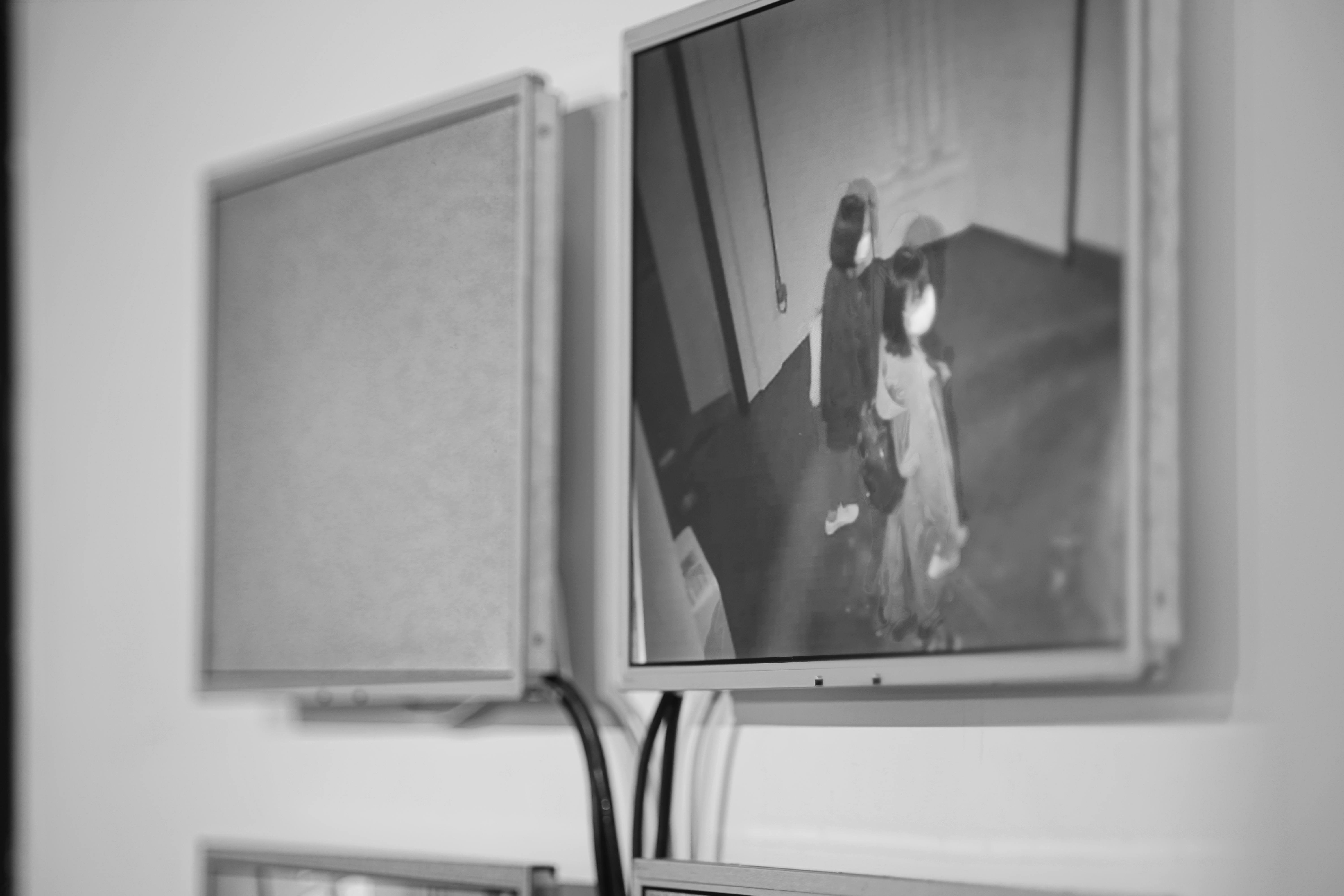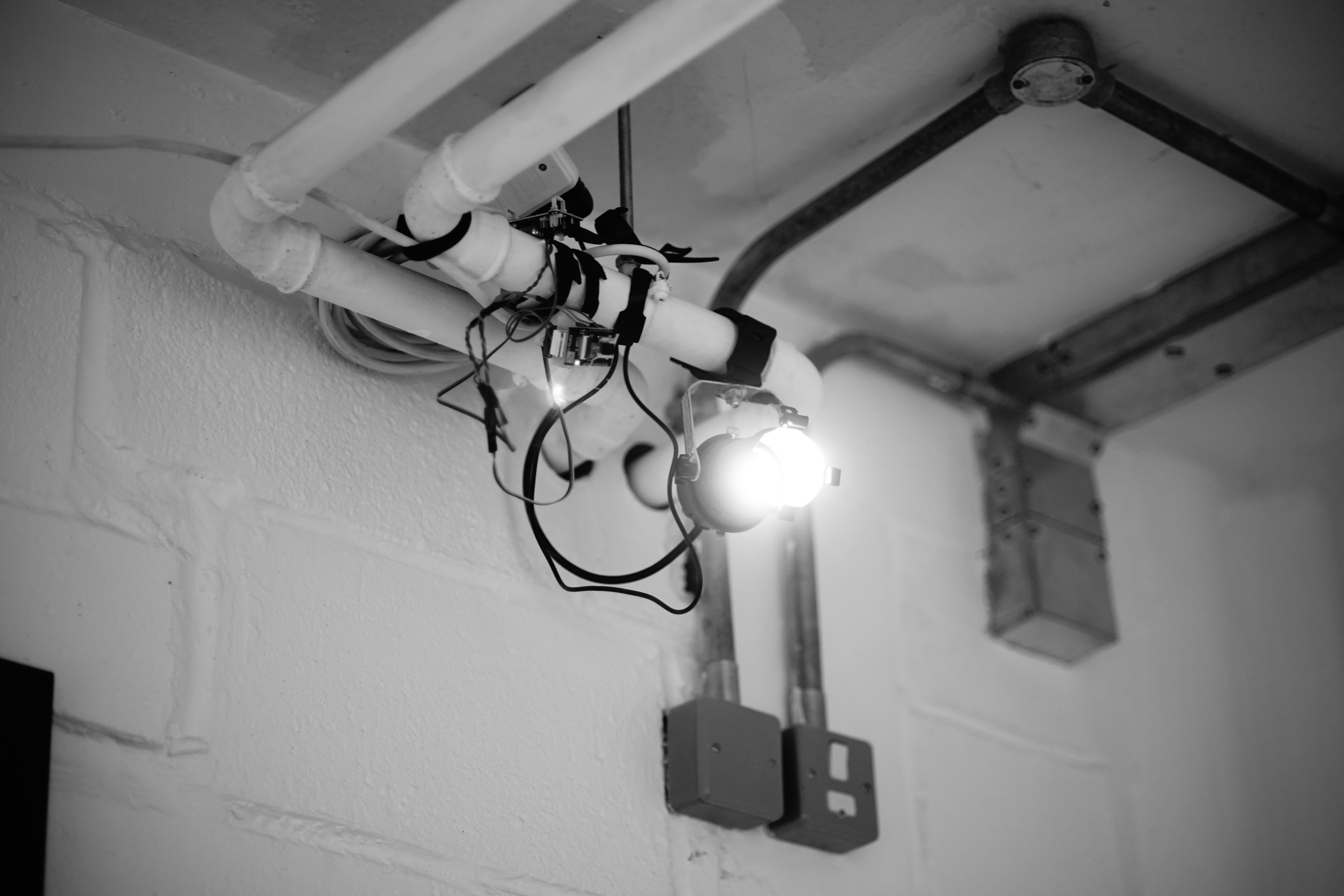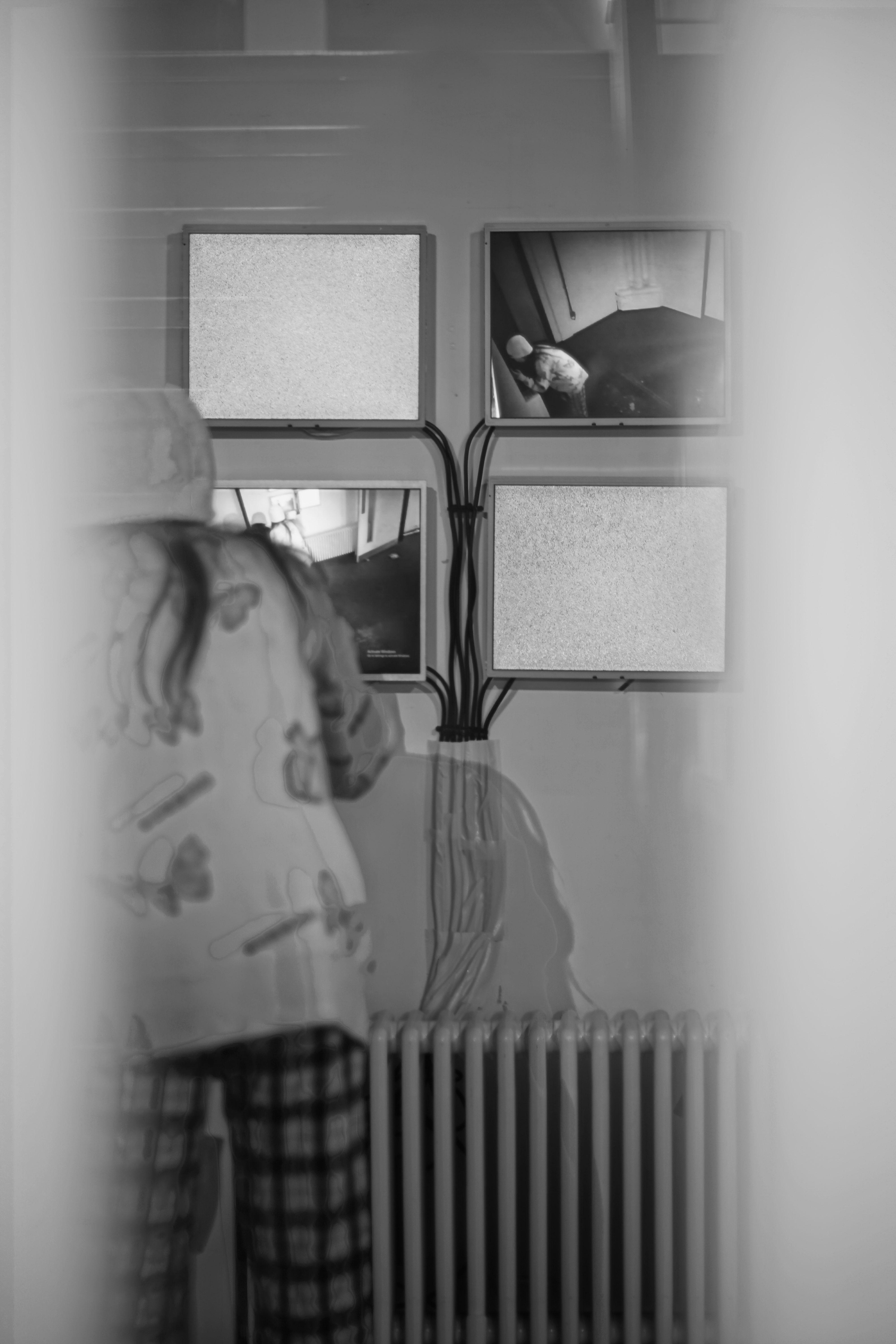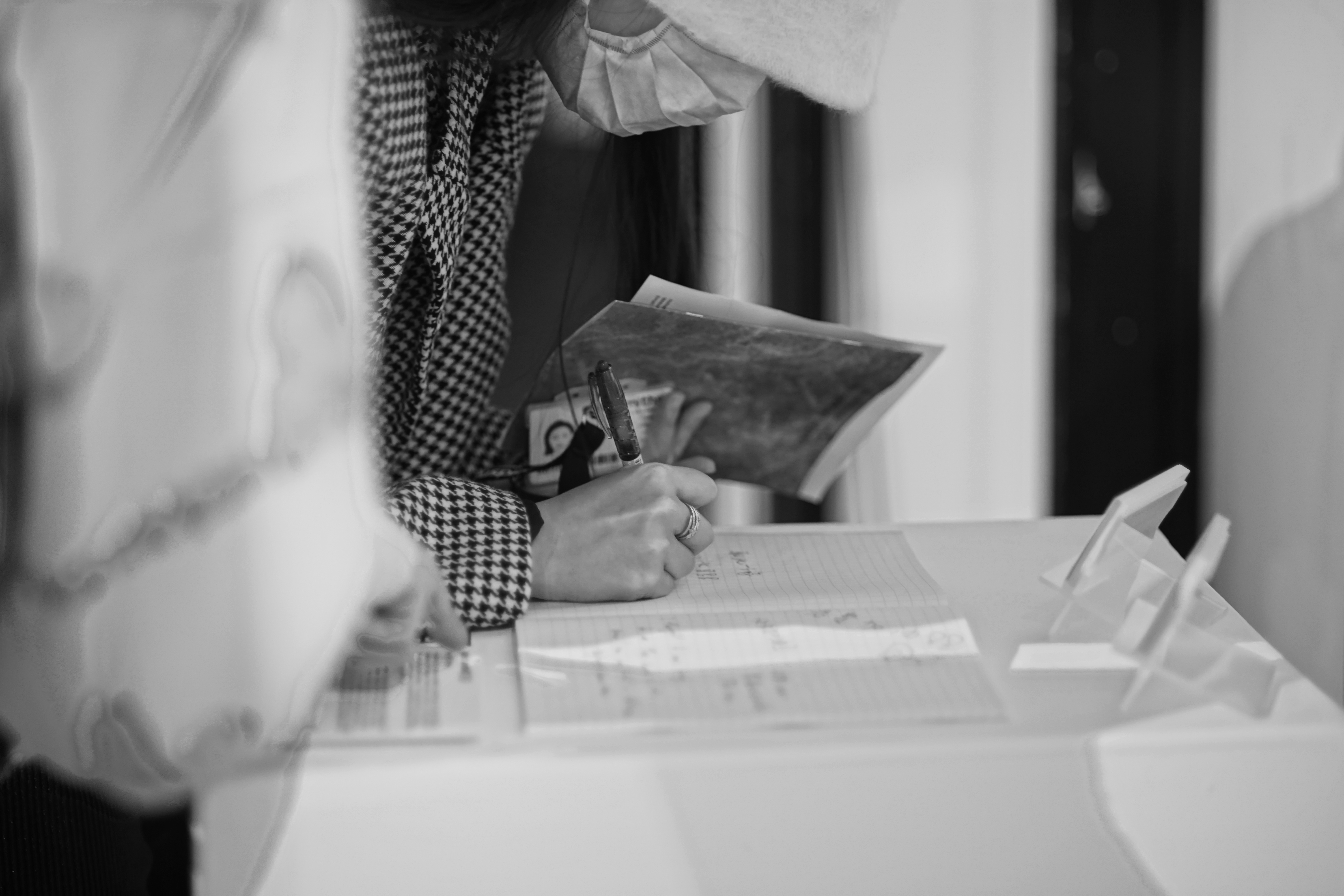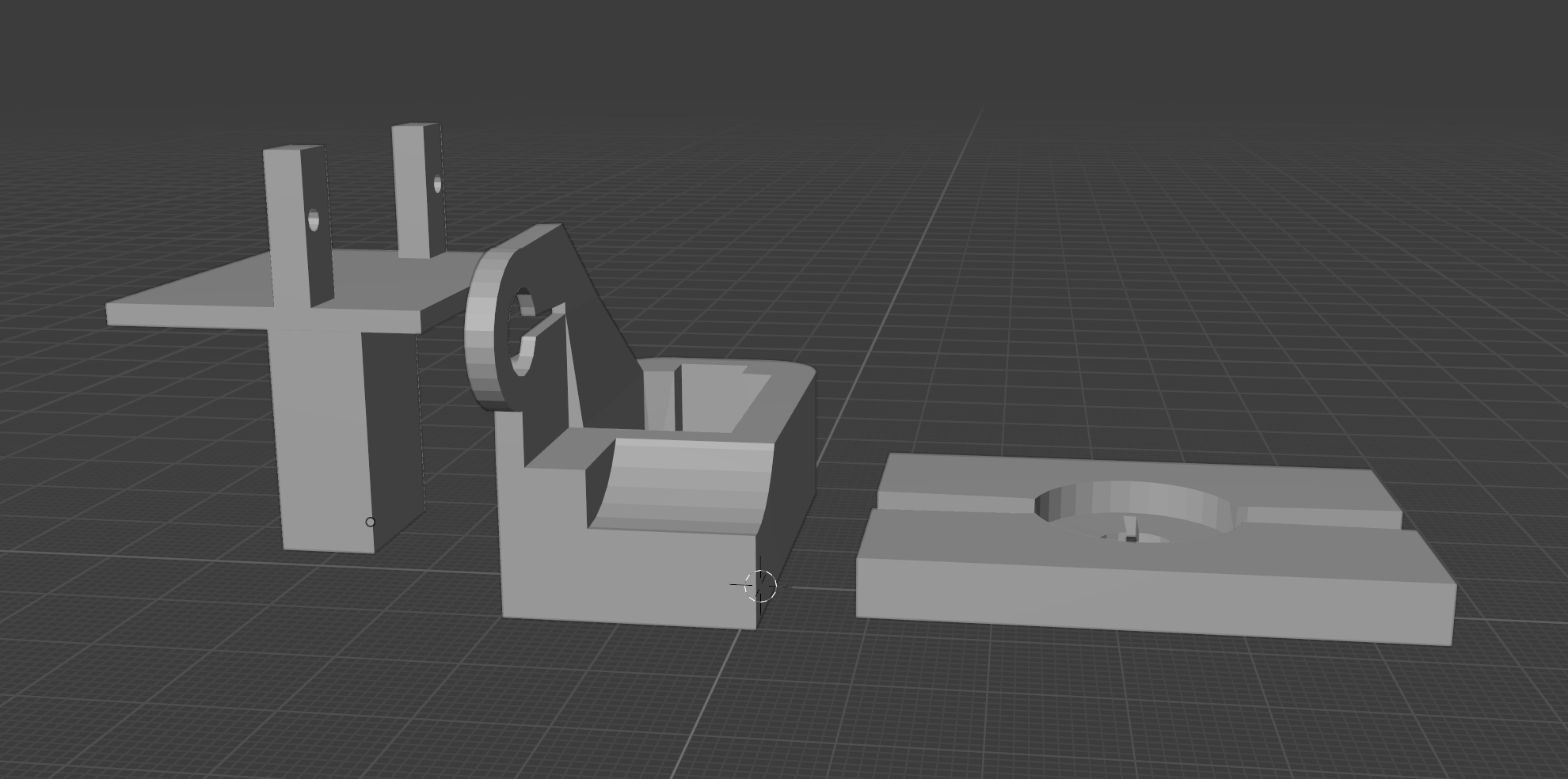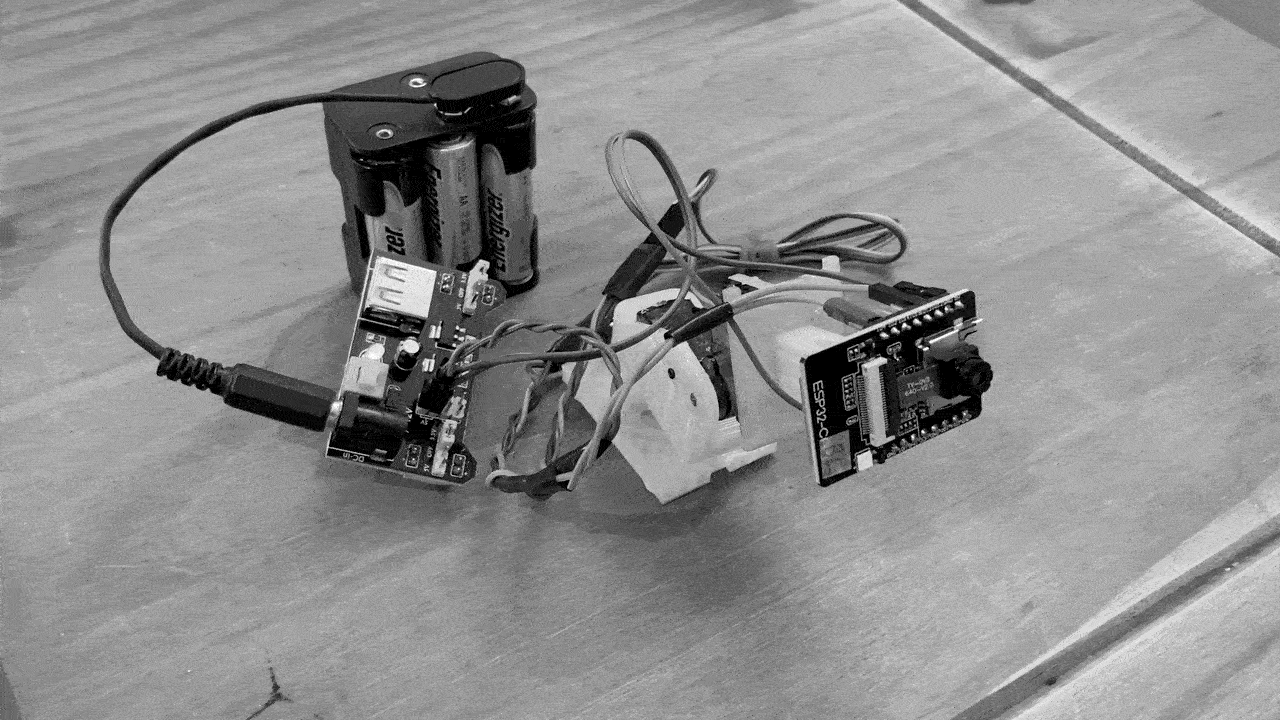void avoid(){}
Surveillance cameras are installed next to the spotlights in the corners of an enclosed room. They monitor the void. They avoid the presence and will move away from any person who enters the frame. Surveillance videos will be displayed on screens.
produced by: Ho Yin Wong
Introduction
In the era of surveillance capitalism, cameras leave us ghostly presences of absence. Empty footages of empty rooms, corridors, or walkways become the relics of our urban loneliness...The void exists within and around us, as much as we try to avoid it. This project frames and situates surveillance cameras as vessels of our voids.
Traversing the blurring boundaries between presences and absences, one's presence will always be confused by their absence, as they are relative qualities. While one's presence can be seen, heard, or felt with evidence, absences are not as simple. Surveillance cameras become didactic tools that show us that absences are not to be avoided. How will you bring these pieces of videographic evidences to question your own existence and relationship with your surroundings?
Self-reflexive of resolution, composition, and the concept of framing, this project also challenges the notion of truth. As truths are limited by the borders of the camera lens, an event is never truly captured. Cinema verite will always be a fabrication of reality, far from other truths or perspectives. To interrogate the void, thereby inviting its audience to read outside of the frame with this, "void avoid(){}”.
Concept and background research
There are 3 major inspirations to make me creating this piece.
1.) Surveillance Capitalism, London is the most surveilled city in the world that there are nearly 700,000 surveillance cameras in operation according to research done by the company cctv.co.uk. What does such a numerous figure represent? Is it protecting one from crime or infringing one's privacy? Which depends on how the cameras are installed and how the recorded videos will be processed afterward. It captures almost everything. For example, one's existence, facial features, and walking posture... both of them are unique to everyone. With these data, identifying anyone from the crowd is easy as pie. The primitive of this tool is to secure one's safety but it can turn into a threat to one's privacy. The consequence can be serious if some parties secretly collect these data and use it with a bad intention. Usually, the cameras are hidden and difficult to find, the public won't be noticed that they are under surveillance. There is a theory, surveillance capitalism, to talk about it. However, people do not understand the importance of these data. It should be treated as filling the personal information in a form and be aware of it will be used. Data collection can be aggressive or passive. The recording belongs to the former which means it can be happened without terms and conditions to ask for your consent even though there is a law to regulate the use of these machines. The last puzzle is education. Concern should be raised between the public, the civil will monitor and report the illegal use. I hope it can be pushed by my work in this age of surveillance capitalism.
After doing the research, I found that there is an existing piece call (In)Security Camera by Ben Chang, Silvia Ruzanka, and Dmitry Strakovsky. In 2003. In their version, the camera follows the subject's movement at the first, once the audience has eyes contact with it, then the camera will avoid them. Although the design of interaction is similar to my initial idea to some extent, I decided to keep developing it and take this further as the process of creating is based on previous pieces and references. In my version, it is more focused on the relationship between humans, the object, and the environment. This leads us to the second layer of the interpretation, the presence, and absence.
2.) Presence And Absence, a surveillance camera is a tool to prove one’s existence in a room and obviously, the captured image is the evidence of one’s presence which is almost not possible to miss out on anything especially when the room is fully attached with cameras. This seems like the fact that is absolutely right to everyone. What if there is still the grey area, will one’s knowledge of presence and absence be shaken. The uncertainty gives me the mixed feeling that I would like to share with the audience. Except for confusion, loneliness, and even the horror, which can be felt from the work behind, an insight would like to convey as well, a new angle to understand this unsolved philosophy question like “The Evidence of Absence”.
3.) The truth of off-camera, other than going philosophical, is related to our daily life as well. “The Death of Chow Tsz-lok” a young protester who die from the social movement in 2019, fell off from the car park but no cameras captured how it happened. The most important thing, the human is missed. His death remains a mystery now. Some media make use of ambiguity to depict their own truth. We can see many works to discuss this topic, for example, in the first episode of the drama “Black Mirror”, the public only receive the news from the media and overlooked the sources themselves. Public opinion can be easily manipulated by the media’s bias. A recent example is a murder that happened in Texas, the Murder of Botham Jean. The media picked sides and made speculations which heavily affected the trial justification. Therefore, the public should keep their eyes on the real world instead of the digital world, the second-hand information as everyone can be a media nowadays, their reputation is not like the ever which is not reliable as ever.
Technical
Setup
- Computer output the video signals and classify the captured video of the audience passed by and send a request to the camera server to control servo motors moving the camera
- 4:3 monitors*4 in grid view to display the captured video
- Router to build a local network connected to all the devices and allow accessing between devices
- ESP-CAM32*4
Modifying the 3d model multiple times to fit the servo motors.
The code for the ESP-32CAM is mainly borrowed from (https://www.hackster.io/anatoli-arkhipenko/multi-client-mjpeg-streaming-from-esp32-47768f). Next, add my own code to move the servo on top of that. As the memory capacity on the chip is really limited, every single line has to be computational cost-efficient that it is too difficult for one who is without experience in developing program for hardware. The feature of this code is handling multiple clients. Generally, the code found online only allows a single connection at a time but this one can make a queue for multiple requests which is also fit for processing the move of servo besides streaming the video.
After ensuring the streaming, the following is the main program. Considering the scalability of the project, I choose web tech as the major tech for the development. There are many benefits of using web tech such as a load of resources that can be found online, a quick development cycle, and cross-platform, etc. I used ML5, a machine learning library that is a wrapper of tensorflow.js which takes care of the tough tasks, the developer only needs to focus on the configuration. Still, the result is not precise, the result is really fuzzy so I wrote a smooth to prevent the move request to the servo will not be accidentally triggered.
How many degrees the camera should be panned and tilted, I took a reference with the following website (https://robotzero.one/face-tracking-esp32-cam/).
The stream is not the same as the required format on ML5 doc which is jpg but different from a usual jpg. And then I came up a way around after trial and error. Although it is not the most efficient, at least it is effective. I make the single detection recursive. It detects again and again once the classification is finished.
Future development
There are a few possible further developments in the future. First, the entire project can be scaled up easily, as long as the ESP-32CAM can connect to the router. So the cameras can be set in different rooms even in the entire building. Second, scripted animation. If more cameras, more monitors are set up, it can become a video wall, the scripted animation will show the aesthetic of movement with rhythm. Third, to enhance the rewarding to the audience, audience interaction can be recorded and random playing from time to time. Also, these videos can be download by scanning a QR code.
Self evaluation
Underestimate the difficulty of physical computing, before using the servo to make the actual movement, I should start with something simple like cropping the image on the browser, it should be much easier and also keeping the same idea. I consulted with technicians and they suggested using PI but I didn’t adopt it because it is much pricy. Over cutting costs adds difficulty to the development since the hardware limitation, I should invest money to ensure its reliability. The last, I should spare the time for testing on the production environment to avoid problems like Internet issues.
References
How many CCTV Cameras are there in London? - https://www.cctv.co.uk/how-many-cctv-cameras-are-there-in-london/
(In)Security Camera - https://vimeo.com/9293913
Death of Chow Tsz-lok - https://en.wikipedia.org/wiki/Death_of_Chow_Tsz-lok
Face Tracking Pan and Tilt with an ESP32-CAM - https://robotzero.one/face-tracking-esp32-cam/
Multi-Client MJPEG Streaming From ESP32 - https://www.hackster.io/anatoli-arkhipenko/multi-client-mjpeg-streaming-from-esp32-47768f
ml5.js - https://ml5js.org/
Murder of Botham Jean - https://en.wikipedia.org/wiki/Murder_of_Botham_Jean
































































